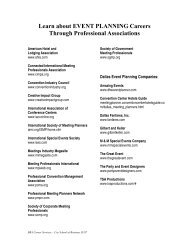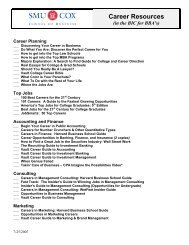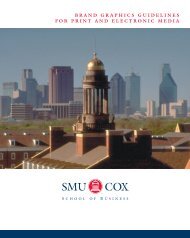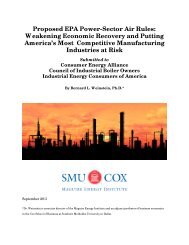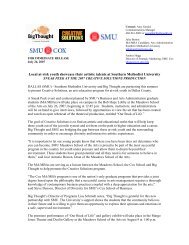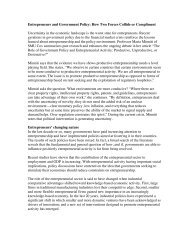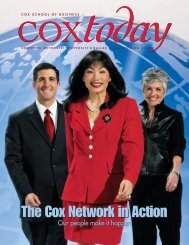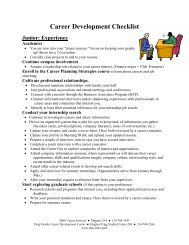Lessons from the Texas Homeowners Insurance Crisis Bob Puelz ...
Lessons from the Texas Homeowners Insurance Crisis Bob Puelz ...
Lessons from the Texas Homeowners Insurance Crisis Bob Puelz ...
Create successful ePaper yourself
Turn your PDF publications into a flip-book with our unique Google optimized e-Paper software.
To fur<strong>the</strong>r explore <strong>the</strong> <strong>Texas</strong> setting, Figure 2 provides a more complete view of<br />
profitability by considering approximated “combined” ratios of <strong>the</strong> top five writing entities in <strong>the</strong><br />
<strong>Texas</strong> homeowners market <strong>from</strong> 1996 through 2001. The entities — State Farm Lloyd’s,<br />
Allstate <strong>Texas</strong> Lloyd’s, Farmers <strong>Insurance</strong> Exchange, Fire <strong>Insurance</strong> Exchange and USAA —<br />
wrote about 68% of <strong>the</strong> <strong>Texas</strong> homeowners market in 2001. The results in Figure 2 illustrate <strong>the</strong><br />
upward trend in <strong>the</strong>se insurers’ homeowners losses <strong>from</strong> <strong>the</strong>ir most profitable point, 1998.<br />
Among <strong>the</strong> top five writers, USAA was clearly <strong>the</strong> most profitable entity yet its diminishing<br />
insurance profitability trend has been upward, too, though not as severe as <strong>the</strong>ir competitors.<br />
From 2000, <strong>the</strong> trend had been particular severe for State Farm Lloyd’s and Farmers <strong>Insurance</strong><br />
Exchange. In all cases, it appears that it would have been difficult for insurers to continue<br />
offering homeowners coverage without raising prices to consumers.<br />
[Figure 2 about here]<br />
Thus, it is clear that <strong>the</strong> insurance industry in <strong>Texas</strong> had been losing money underwriting<br />
homeowners insurance in this market, and <strong>the</strong> rate at which <strong>the</strong>y were losing money was trending<br />
higher for rate-regulated companies. This leads to a regulatory conundrum: While capping or<br />
lowering rates may be, in <strong>the</strong> short-run, politically appealing, <strong>the</strong> prospect of moving to a more<br />
rate-regulated environment moves insurance management into a box. On <strong>the</strong> one hand,<br />
insurance firms are about taking risk; that is what <strong>the</strong>y do. On <strong>the</strong> o<strong>the</strong>r hand, no business<br />
proposition where a product or service has expected costs that exceed its expected revenue ought<br />
to be offered. In this event, management is better off doing nothing ra<strong>the</strong>r than participating.<br />
9






